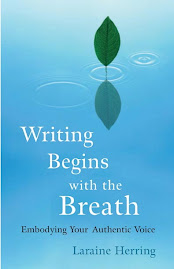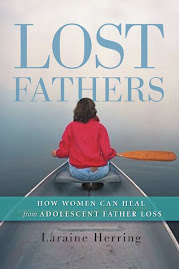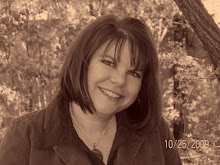This is an excerpt from a chapter that I'm currently working on in Gathering Ghosts.
It begins when you first try to write. You take your #2 soft lead pencil and make fresh marks on the newsprint paper. A looping “P” can turn into an “R” which can become a “Q.” If you never lift the lead from the paper, you can join them all together in a song of harmony and grace, but then you show the world what you have made and they tell you it is jibberish. The beautiful loops and lines you dragged from your heart are worthless to them.
So, you learn, there is a way. There is a way to do things and a way not to do things. Your heart is sad, but you cover it up because when you make the loops and lines their way they smile at you and bring you juice. They tell you you are smart and show your paper to other people. The juice is cold, sweet, and sticky.
It no longer matters that you cannot understand what you wrote because your letters are mirrors of theirs.
***
I worry a lot about rules. I want to stand in the right line, drive in the right lane, and say the right things. I was raised to believe that if you did the right things you’d be rewarded. I could see the benefit of not driving in the lane facing oncoming traffic. I could see that it would be more efficient if only people with fewer than fifteen items went through the express checkout line. Healthy compromises of community living.
I do understand that we have to communally agree on what a “g” is – what it looks like, what sounds it can make, what words it’s a part of – in order to have communication at all. But I came of age in the last throes of grammar education in grade school. I learned odd things, such as:
Never begin a sentence with a conjunction.
Never end a sentence with a preposition.
Each new paragraph should begin with a transitional word.
A paragraph contains five to seven sentences and always begins with a topic sentence.
An essay’s final paragraph must sum up all that has come before it.
Odd things, that had very little to do with writing, and very much to do with constructing.
***
It’s a hot day in Charlotte. I’m in the seventh grade. Our text is Warriner’s English Grammar. My English teacher, Mrs. Peeler, is a formidable woman who also happens to attend our church. She is the clichéd English teacher – gray hair pulled back into a bun, glasses on a silver chain around her neck, red lipstick which occasionally stained the surface of her teeth, and nude pantyhose and high heels, no matter how hot the day. She made us memorize poems and come to the front of the class and recite them. I still remember mine. William Wordsworth’s “The Daffodils.”
She taught us to diagram sentences (a miraculous feat that has somehow fallen out of favor) and with that, she showed me that every word in a sentence has a purpose. You could see in your diagram if you had too many modifiers for your noun or verb. You could see if the subject of the sentence had no object. You could revise it and make a brand new structure – a brand new picture. Most of the kids loathed diagramming, but I thought it provided a door into language I’d never walked through before. (Oops, there I go, ending a sentence with a preposition – oops, no, “before” is used as an adverb there. How does one keep it straight?) In order to diagram a sentence well, you had to communicate with the words themselves. You had to ask the adjective, “What are you modifying?” And the adjective would answer. You had to ask the prepositional phrase which verb it connected with. You had to listen to the answers of the words. You couldn’t just randomly assign words to each other. They simply wouldn’t fit.
Contrary to what many students thought, I didn’t think diagramming sentences force-fed rules down our throats. I thought diagramming sentences taught us to listen to the beauty of an individual sentence – and even deeper than that – taught us to focus on the importance of each word choice and ask ourselves, “Does that word belong there? Is another word a better choice? If we take out the word, does the sentence change in meaning or aesthetics?” We couldn’t make those choices with our intellects. The choices come from our connections to the desires of the sentence itself.
How do we know what a sentence desires? We have to ask it. How does a sentence know what it desires? It asks the paragraph? And the paragraph? Well, yes, it asks the chapter. And the chapter must ask the work as a whole what it desires.
Huh? How the heck do you get there?
Remember when they told you how to write a paragraph? And they gave you rules such as don’t start a sentence with “and”. And they told you writing comes from somewhere out there involving sources and citations and documentation. And they told you that there were nine patterns of development for your work, and that the thesis statement is the last sentence in the opening paragraph. They told you these things not because they’re wrong or bad. They do, in fact, work, and they make a solid piece of writing for a composition student who has no interest in what language can do. But for a student who is a writer – for a student who loves what sentences do – the rules are the stones in the pockets of your jeans. Clear out your mind so you stop hearing the rules before you hear the writing. When you don’t know where to go next, look to the sentence you last wrote for clues. What does the verb denote for you? What image does the noun conjure up for you?
When I was seven, I went to visit my pediatrician, Dr. Huff, for my final dose of the polio vaccine. The vaccine was liquid. The doctor handed me the plastic packet of vaccine and told me to put it in my mouth. I did exactly that. A few minutes later he came back in the office. I still had the liquid in my mouth. He and my mother laughed at me.
“Why didn’t you swallow it?” he asked.
I swallowed, but I was bewildered. “You didn’t tell me to swallow it. You told me to put it in my mouth.”
My literal interpretation of the doctor’s instructions shows you how strongly I wanted to follow directions – how strongly I wanted to do everything right. My ninth grade English teacher counted off points if our cursive letters didn’t have all the appropriate tails. If she couldn’t tell our periods from our commas, she marked the whole sentence wrong. The church we belonged to taught me I was born in sin. My Southern culture taught me not to wear white after Labor Day, and that a lady should always wear a hat.
“Why didn’t you swallow it?” What a provocative question. I did swallow a lot of it. I swallowed rules and sins and fears and contractions. But all that swallowing left little room for listening. When you take the time to first be still and listen, the first things you’ll hear are the things you swallowed into your belly. You’ll hear the things you absorbed in utero. You’ll hear the scratches of your mother’s fears and your father’s rage. This chorus of uninvited voices is an avalanche of shoulds and shouldn’ts, dos and don’ts. Sit a while longer. What are you underneath that din? The clanking of other’s agendas is enough to make many a writer get up and decide this gig isn’t for him.
Stay. What’s under your mother’s sadness? What’s under your grandmother’s alcoholism? What’s under the programming of never beginning a sentence with “and”? The ideas you’ve swallowed built a wall. Shake it down. Move into your lungs and break the sadness off.
Stay. Stay longer than you ever thought you could. Sit cross-legged or not. Sit in a chair or on the floor. Sit in your bed or in your car. But sit. Stay. Look at each thing you’ve swallowed and ask yourself: Is it mine? Does it serve me? Then ask yourself what you feel is the next step. Ask your body not your mind.
***
This morning we stare at each other, my work and I. The winter weather has broken, likely only for a blink, but this week it's in the 60s and the ice and snow is melting and pouring into the creekbeds that have been dry for months. I am easily 50% feline, and can stare down the best of them. But I can't outstare my work. Today it's so close I feel I can reach out and snatch it up with one hand, and I want to. I want to grab it and keep it tight so I don't have to keep wondering about it. But instead I watch it watching me. I try (ah, so foolish!) to figure out what it's thinking. What it wants me to do.
My brain is beginning to swim with topic sentences, basic grammar, and the beginnings of student stories. Yesterday I spent two class periods working on paragraphs with my developmental students. What detail can we add here to make this memory more vivid? Can you see how we've got two separate thoughts here, joined only by a comma? Let's look at chapter 16 in the book - Run on Sentences. Do you see how your topic sentence is about how cell phones have changed in the past five years, but what you've written about is why you love your cell phone?
It's a slippery slope once we reach this point in the semester. I adore teaching, but I find myself stuffed with 90 different minds -- 90 different ways of thinking -- and it grows harder to hear myself and nearly impossible to hear my writing. I don't know any writers who teach writing full-time who don't struggle with this every semester. We must practice emptying out before going to work. Empty out after work. We have to shake the day off, shake the other minds out, so we can listen once again to our own work.
Today, the work glitters. It's a beautiful mirage -- Las Vegas like -- all glitz and facades. But Vegas lights mask the heartbeat of Nevada. I see shimmering covers for the book. I see glowing reviews. But I open the book and I see emptiness. I even think I hear laughter. What are you doing? What are you thinking? You're not even remotely ready to go where I want you to go, it says. Not even close. But there's all that sparkly red and purple glitter. There's the seduction of the writing itself. The "I love you-go away" push pull of the process that slams us, addicts all, up against its walls.
"What do you most not want to say?" It shouts. "Go on! Coward!"
I open my mouth. Nothing. I decide to click over to Zappos.com and look at expensive shoes. I click back. It's still waiting. What do you most not want to say? I feel it, whatever that answer is, banging against my ribs, pushing up underneath my tongue. I sneeze and cough today. It is beginning to move. It is beginning to eke out, letter by letter.
What do I most not want to say?
First, I'll listen. Then, I'll sit with it. And at last, I'll shake it free.
Subscribe to:
Post Comments (Atom)











4 comments:
What a beautiful post in the ways that you explore yourself, your writing, and the idea of authenticity . . . I'll respond, I hope, in the next couple of days . . . Thank you.
Gosh, I never thought about 90 other people being in my head all at once. Seems like the beginning of a Dean Knootz novel. :+)
Leave it to Barbara to make a Dean Koontz reference. :-)
I just feel honored to have sat at your feet all last semester and can't wait to do it again soon. :-)
Thanks, ladies - Andi, Barbara, & Tonya -- I appreciate your thoughts & love knowing you're out there reading the blog!
Laraine
Post a Comment